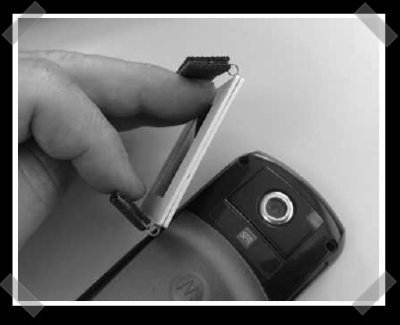
[JC Doré] sent in this [english] interesting optics hack. The rubber grips are made from an old mouse pad, the springs for the clip were salvaged from zip drive floppy discs. A pair of old photo slide frames sandwich a diffraction grating slide. (Like this one) This simple mod allows the slide to be mounted to most cell phones, turning them into digital spectrometers.
11 thoughts on “Simple Digital Camera Spectroscope”
Leave a Reply
Please be kind and respectful to help make the comments section excellent. (Comment Policy)














Wow, I Always find myself in situations where I’m like “If only I had a portable spectroscope now!”. Thank you, Jc Dore!
I cant imagine to many practical applications for this, but its still a cool/fun idea.
the idea behind this project, which emanates from jean-pierre petit, is that by mass-distributing cheap diffraction grates or by convincing a phone manufacturer to include them, the chances of people taking a spectrographic photograph when they see a ufo will increase. the obtained spectrum can then be used to obtain information about the ufo. for instance, it should be theoretically possible to recognize the emission spectra of the navigation lights of a regular airplane.
Too bad my computer blocks the site. I’ll have to look it up at school. This looks really cool. I’ve always wanted a spectroscope.
Nice idea.
I just googled for refraction grades and they really are much cheaper than I thought. I could build a spectrometer for afew bucks.
Useful?
Yes. You can check white LEDs whether they are RGB or phosphor coated. Maybe analyze LED wavelength distribution to design a growth light, look how voltage changes influence the luminance distribution of your bike light, etc….
so skyler, your computer is the dominant one in the relationship then?
I usually don’t make off topic comments, but #4, that’s hilarious!!!
thank for comment. I’m sorry for Skyler, but agree with Kamu ;)
If you want more information about this project, put comment on my site.
JC
Now I’m imagining a rotatable wheel with a bunch of different filters- spectroscope, ND-grad, exposed negative style ir pass etc. that clips onto the camera phone . I’d like to see someone make one of those, actually.
re: #3, #4, #5, #6- skyler, if your computer is blocking stuff you can see at school then maybe it’s being unnecessarily restrictive. You should sit down with it and have a talk.
In the iPad v. Kindle state of affairs, this gives the publishers one thing of a negotiating lever �X if Amazon won��t budge on their terms/conditions, I��ll attend Apple. Etc.
This is legit. It’s amazing that a spectroscope for sale like this could cost so much, when you can just make one.
This gadget more carefully resembles what astronomers call a “grism” – it superimposes the spectra on the image. So if you’re looking at a largish light source, the spectrum will be all smeary. You’d need to run the light through a slit or other monochromator to take actual measurements.